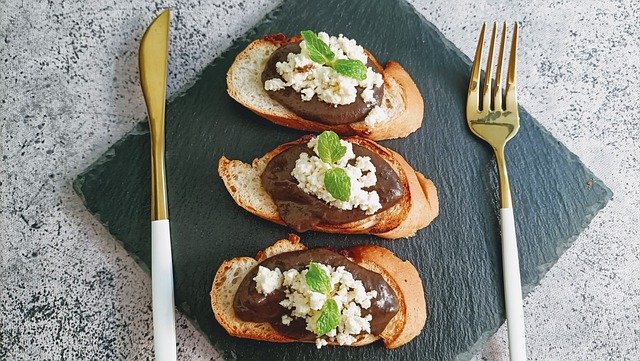Spanish Olives
The Essence of Spain
When I moved into the Campo House last December, there were still some olives left on the 12 trees in the garden.
All across Spain the olives are being harvested this month. For the table, for oil and for preserving of the 200 varieties grown across the country. Spain is the world's largest producer of olives with 2.5 million trees in the agricultural sector alone. A staple part of the Mediterranean diet and symbolic the world over.
Green or Black Olives
Both are actually the same fruit, the black being the more ripe version from the same tree. The green olives are favoured here for preserving for table olives. Once the flesh of the green olives produces a cloudy milk they are ready for picking and brining. The earlier the harvest of the green olives - the more bitter the taste of the end product. Green olives also contain much higher vitamin E than the ripe black ones, and I am told rubbing a split green olive from the tree on a skin burn is a really effective treatment.
Black olives produce much more oil but are more mellow than the earlier green harvest around late September and green is much preferred for the flavour of the oil. With a staggering 10kg of olives to produce just 1 litre of oil and requiring harvesting by hand, you can understand why olive oil can command such a high price.
How to Process Olives
The cure - or the brine - is the solution the olives are soaked in to remove the bitterness. Without this, the olives are unpalatable because of the high oleuropein content.
Brine can be salt and water, vinegar and water or just water or a combination of all. When I was in the middle east the process always involved vinegar and lemons, here in Spain I am told that most olives are preserved with salt water brine.
Slitting or crushing the olives speeds up the process of brining as there is some surface area for the brine to penetrate. I have tried all the options - smashing each olive with the base of a sturdy wine bottle was the most satisfying but also ends up with some very bruised olives that don’t look so attractive. So now I sit in the autumn sunshine with a large bowl and a sharp knife and make a slit in the flesh of each one.
I did buy this fancy olive stone remover - it broke after about half the bowl of olives - lesson learned.
The slit olives are plunged straight into a bucket of cold water, the longer the fruit is off the tree and not in water the more they oxidise and then produce a much inferior taste. After a good wash, I store the olives in clean jars and fill them with water. The water has to be changed every day for around 2 weeks - or until the olives don’t taste bitter anymore.
I had just picked the olives when the visiting family decided to visit the beach for a week last month, so the jars of olives had to come along too so I could continue the daily rinsing.
After the 2 weeks of daily rinsing, the olives are then placed in the brine which I make with 2 tablespoons of salt per every cup of water. Once the jars are full I cover the surface with a layer of olive oil which helps to seal the top. This is the point where the flavours can be added.
Around the Campo, I am told that Hierbabuena is the top choice as it grows prolifically on the verges. I now tend to leave mine unflavoured in the brine and add fresh chopped herbs and roasted garlic as I serve them with a drizzle of olive oil. The Oregano plants in my garden are growing voraciously already so my olives will possibly end up with a lot of Oregano this year.
When I moved to the Campo house last December there were still plenty of olives left on the trees and I started experimenting with different processes to brine them. Hours of video watching and research lead me to the conclusion that there are nearly as many ways to brine olives as there are different varieties of trees. As we move into December and all the olives are black I will process some of the black ones too by slitting them and coating in dry salt with a heavy weight placed on top. This shrivels the olives and after a few days are fabulous to use in a Tapenade.
Not just Spanish Olives
The Italians seem to favour soaking in fresh water daily and then dry-curing their olives with salt. The greek method is often a vinegar solution and then I was in the middle east, the village ladies used lemon slices, leaves and a small amount of salt.
Whichever way the fruits are cured the end result is fermented olives. Fermented foods are proven to be super beneficial by producing probiotics that aid gut health.
All olives are a good source of fibre, iron, iodine and antioxidants, with high levels of vitamins B and E.
The renowned Manzanilla de Sevilla Olives, also referred to as Spanish Olives are of course very popular here and I have to say - the absolute best Martini Olive.
How to buy Olives
Olives with the pit mechanically removed absorb brine very quickly, which is why a lot of factories do this to speed up the process but it doesn’t result in the best taste.
The best are sold loose so it’s possible to taste one before buying, but this is often the most expensive way to buy olives too.
With tinned olives, it is impossible to tell what’s inside but in many parts of the world, this is the only way to purchase olives. Black olives always come in tins as the canning process is the preserve. If I ever do need to buy green olives from the supermarket then I choose glass jars. The liquid should never be milky or cloudy, and the olives should not be bruised or damaged.
How to buy Olive Oil
Olive oil should always be sold in obscured bottles to protect from the light, I will always avoid buying oil in a clear bottle and ideally consumed within 18 months according to oil aficionados. I know families that use olive oil much older than that in practice.
EVOO is often used on labels in Spain, meaning extra virgin olive oil - the finest oil there is and firmly reserved for raw dressing. Cooking with EVOO is just a waste and there are many less premium olive oils for that.
My plans to try and make my own olive oil this year was thwarted by a low yield on my 12 trees in the garden - that process will have to wait until next year. Spain produces on average 800 tonnes of olive oil every year so I will revert to buying my locally-produced oil this year.
Tapenade
One of my favourite ways to eat olives is by making a tapenade to spread on toast or atop grilled fish. The traditional Tapenade is made with olives, anchovies, capers, herbs and garlic. The joy of making Tapenade is adding in the flavours and things that I happen to have in the kitchen at the time. I rarely add capers but will add a good squeeze of lemon juice at the end to give that sharp zing. Roasted garlic cloves squeezed into the tapenade take some of the fiery heat away that raw garlic can result in. Fresh Chives, Parsley and Oregano get chopped and added straight from the garden too.
Tapenade Recipe
300gram black pitted olives
1 tablespoon of capers
2 anchovy fillets
50 ml of olive oil
1 teaspoon of sherry vinegar
Blitz all the ingredients together and scatter with fresh herbs. I prefer a stick blender for this as I like my tapenade to be quite chunky but a food processor also works well.
Ways to use tapenade:
Stuff a mushroom cap and top with cheese under the grill
Use it as the base sauce on pizza or akin to pesto on hot pasta
Add to smashed avocado on toast
Use as a relish on burgers, grilled fish or vegetables
Conclusion:
Spanish Olives are an integral part of the diet and culture in Spain and are definitely an important part of the healthy Mediterranean diet wherever possible.







